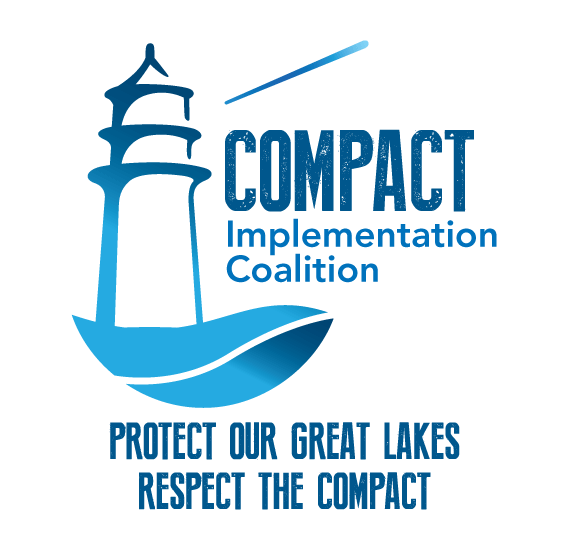THE GREAT LAKES COMPACT
The 2008 Great Lakes Compact is a federal law and binational agreement between Canada and US. It exists to safeguard the largest freshwater ecosystem in the world, the Great Lakes. It’s a unique agreement among eight states (Illinois, Indiana, Michigan, Minnesota, New York, Ohio, Pennsylvania and Wisconsin) and two provinces (Quebec and Ontario) to protect the greatest source of freshwater in the world today.
The Great Lakes Compact was created to protect the Great Lakes as a vital economic and cultural resource. The compact details how the Great Lakes Basin’s water supply is used and managed. Included in the compact, is a ban on water diversions outside the Great Lakes Basin, except in rare instances.
COMPACT BECOMES LAW
Environmental groups worked for years with state and federal partners to advocate for passage of a strong Great Lakes Compact, and in 2008 the Great Lakes-St. Lawrence River Basin Water Resources Compact was signed into law.
The process has been long with its first major accomplishment in 2005 when following a nearly five-year negotiation, the Governors of Illinois, Indiana, Michigan, Minnesota, New York, Ohio, Pennsylvania and Wisconsin reached agreement on the Compact. The Compact provides a comprehensive management framework for achieving sustainable water use and resource protection. The eight Great Lakes States reached a similar, good faith, agreement with Ontario and Québec.
The Great Lakes are a national treasure—important to our nation and the world as both an environmental and economic asset. Our national economy depends on the Great Lakes for industrial uses, hydropower, maritime commerce, agricultural irrigation and many other uses. The Great Lakes are also a globally unique and important environmental resource. The Compact will ensure that the Lakes are used sustainably in order to continue to provide benefits to us all.
The Compact includes the following points:
Economic development will be fostered through sustainable use and responsible management of Basin waters.
In general, there will be a ban on new diversions of water from the Basin but limited exceptions could be allowed in communities near the Basin when rigorous standards are met.
Communities that apply for an exception will have a clear, predictable decision making process; standards to be met; and, opportunities to appeal decisions. These processes and standards do not exist under current law.
The States will use a consistent standard to review proposed uses of Basin water. The States will have flexibility regarding their water management programs and how to apply this standard.
Regional goals and objectives for water conservation and efficiency will be developed, and they will be reviewed every five years. Each State will develop and implement a water conservation and efficiency program that may be voluntary or mandatory.
A broad, bi-partisan consensus has been built in support of the Compact. The Compact was developed in collaboration with regional partners who have also played a key role in its implementation. Members of Congress, Mayors, local government officials and stakeholders have all been instrumental.
